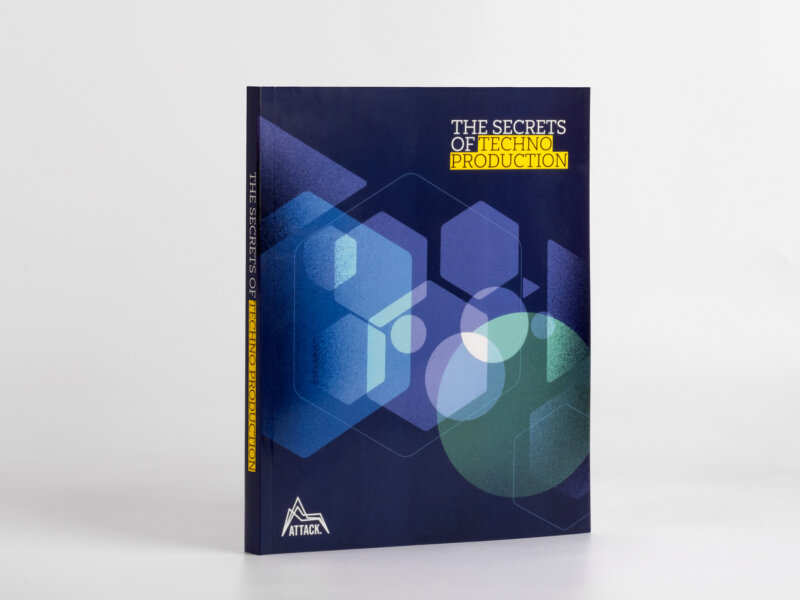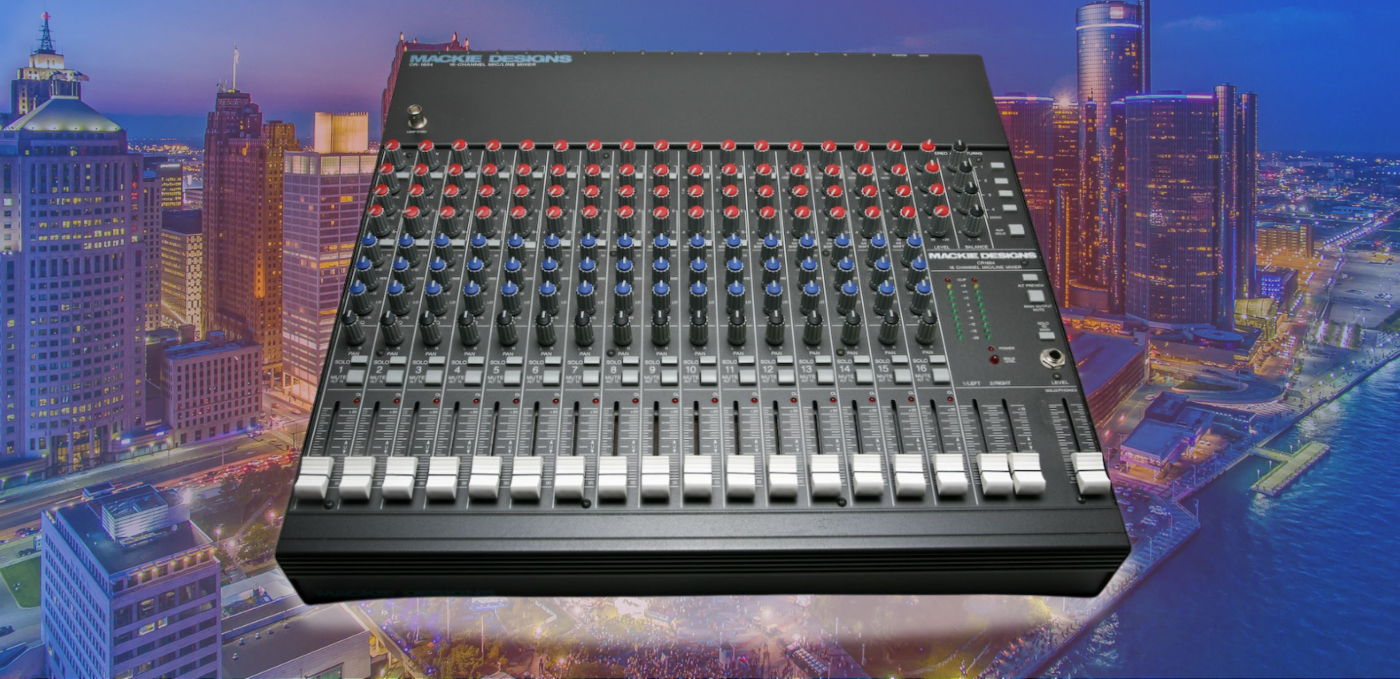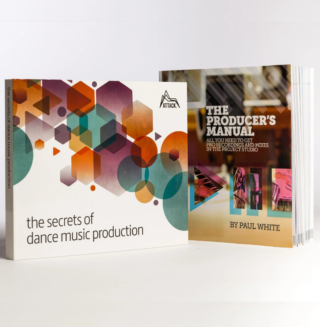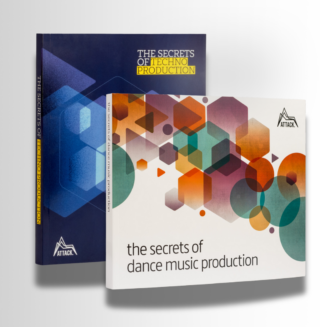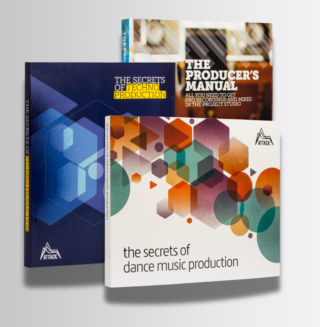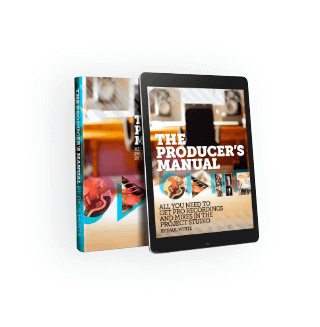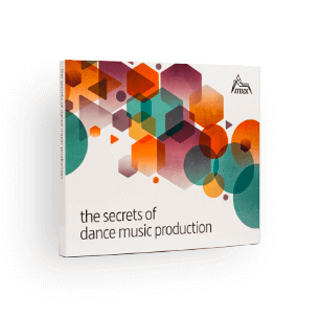From the 909 to samplers to Ableton Live, here is the hardware and software that helped shape the sound of techno – in all its many variations.
Next year marks an impressive milestone for techno as it approaches 40 years of shaping the music world. If we mark the start of techno with the release of “No UFOs” by Model 500 in 1985, and it’s a topic of debate, then we’re closing in on four decades of techno music.
While the genre has evolved far from its early roots in the mid-‘80s, with modern tracks often sounding vastly different from their predecessors, we can still trace an unbroken line connecting today’s sound to the genre’s pioneering moments.
In many ways, that line charts the evolution of techno through its many variations and the gear and software employed by techno’s many producers over the years. Despite the variation in sound, technology and eras, some instruments and equipment stand out more than others.
In this piece, we’ll call out the top 10 pieces of gear and software that defined techno. These are arranged in no particular order.
With such a broad category as techno and with such a long history, we’re sure to have missed out on some important pieces of gear. What did we forget? Let us know in the comments.
Roland TR-909
In 1983, Roland released the TR-909 Rhythm Composer drum machine. The follow-up to the 808, it would go on to have a massive influence on electronic music – and techno in particular. Even to this day, you could make a track with nought but a 909 kick, hats and rides, and it could still qualify as techno.
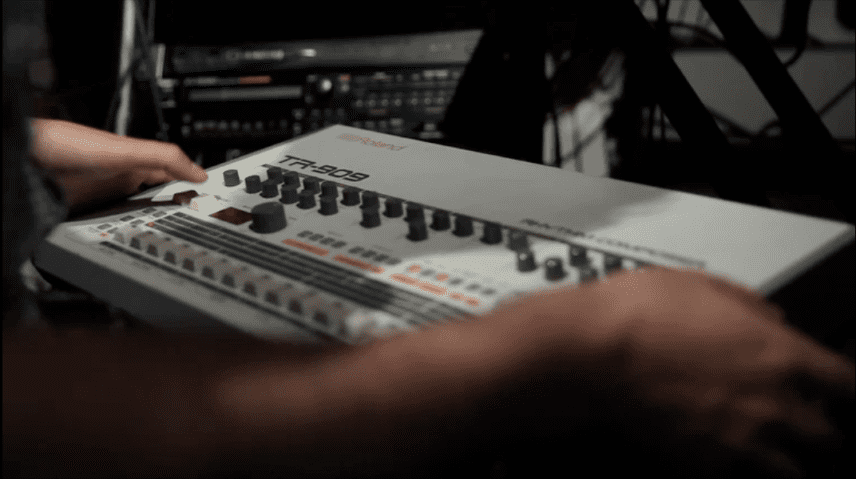
Almost right from the start, the sound of the 909 was associated with techno. In the mid-1980s, a cash-strapped Derrick May sold his 909 to Frankie Knuckles, inadvertently introducing the drum machine to Chicago house. Juan Atkins was none too pleased with this. In a story related by Eddie Fowlkes in a 2005 interview with Pitchfork, Atkins complained to him, “Derrick went and gave away the fucking sound! He couldn’t pay his rent and sold his 909 to Frankie Knuckles in Chicago!”
The sound of the 909 – at least as far as techno is concerned – is defined by two elements: the analogue kick drum and sampled acoustic hi-hats/rides. The kick drum was designed by Tadao Kikumoto, also the man behind the TR-808 and TB-303 (see below), and remains the gold standard for techno kicks: weighty and punchy. The hats and rides, however, are digital samples. Done at 6-bit, they’re crispy and metallic and slice through a busy percussion mix like a stabbing knife. (For the story on how the hats and rides came together, see our interview with Roland engineer Hoshiai Atsushi.)
Ableton Live
Whenever electronic music producers make the switch to Ableton Live, they invariably comment on fast the workflow is. This is no coincidence. Ableton Live was developed by a team that included techno producers Robert Henke and Gerhard Behles, aka Monolake.

Right from its initial release in 2001, Live was aimed at techno producers. With an emphasis on working with loops (still a dominant composition technique in techno) plus a collection of built-in instruments and effects seemingly curated with dance music producers solely in mind, it quickly found favour with techno producers – and remains popular with them today.
Of course, Live is not the only techno DAW in town now, with competitors like Bitwig Studio giving it a run for its money. But 23 years after its release, Ableton Live remains a driving force in the creation of techno.
Compressors
Originally developed for radio broadcasters to reign in peaks and boost overall signal output, and then later employed in recording studios to keep performances at an even loudness level, compressors have contributed mightily to the sound and evolution of techno.
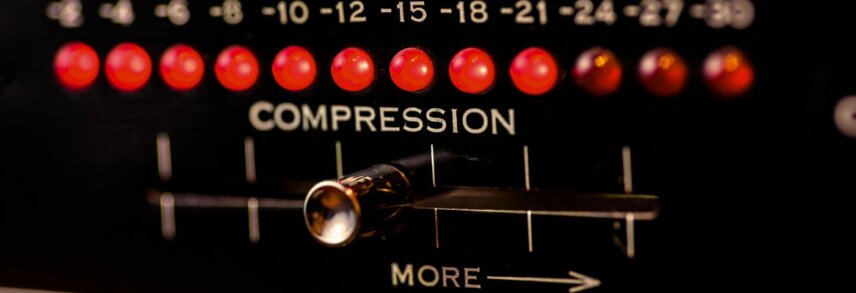
It’s practically impossible to imagine modern techno without some kind of compression. While some peak-taming may be happening with the occasional live performance, for the most part, techno is all about using compression as an effect – on the drums (individually and across the bus), on basslines, and even on the whole track.
With so many compressors released over the years, it’s hard to pick a single one with the most influence. But the Alesis 3630 comes close. A budget compressor released in the 1990s, it played a big part in the sound of ‘90s dance records. However, it’s also been called the worst compressor ever made and for every fan, you’re sure to find an equally zealous hater. Polarizing, yes, but still highly influential.
With so many compressors released over the years, it’s hard to pick a single one with the most influence. But the Alesis 3630 comes close
Samplers
Samplers were the great democratizers of music in the 1980s and ‘90s. Suddenly, you didn’t need a lot of equipment to make professional-sounding music. You just needed a sampler.
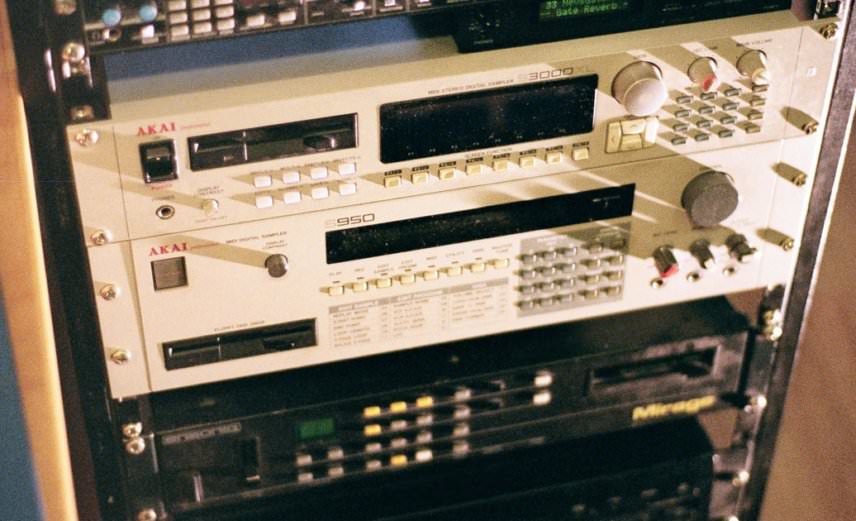
For techno producers, that meant that they didn’t even need a 909. With a semi-decent sampler like an Akai S950 or Ensoniq Mirage and a sample CD or even a cover-mount disc from Future Music, you could bang out underground tracks in your bedroom without much trouble at all.
Samplers also offered new avenues for sound design. Joey Beltran’s famous ‘Mentasm’ hoover may have been generated by a Roland Alpha Juno, but it sounds like it does because Beltram and partner Mundo Muzique played it on a Casio VZ-1. This is also why ‘Energy Flash’ sounds like nothing else. They may be analogue synth sounds, but they’re coming out of a sampler.
These same processing techniques helped transform 909 sounds from bright and snappy straight out of the box to the dark and moody sounds we’re more used to today. Computers would play their part for sure but the extreme sound design that techno is famous for began with hardware synthesizers.
Mackie CR-1604
In 1991, a new American company released a 16-channel mixer at an affordable price. It’s not such a big deal today, but at the time, it was a pretty rare thing. This is, of course, the Mackie CR-1604, and pretty much everyone bought one for its cost performance and warm sound. This included many techno producers, who discovered that if you crank up the trim on the inputs, it overdrives in a really musical way. Behold, the secret sauce of ‘90s techno.
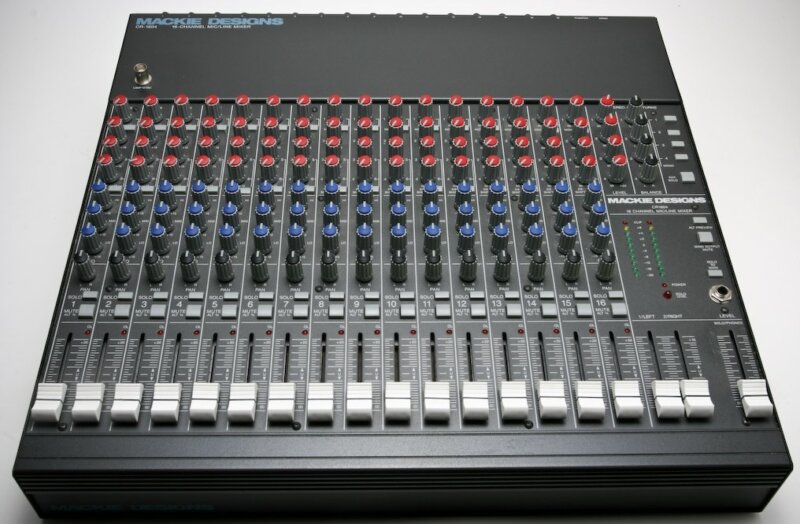
If you’re after the Mackie sound but don’t want to buy a crusty used one, check out Mackity by AirWindows, a Mac-only software emulation of the famous mixer and its channel trim circuit.
Elektron Octatrack DPS-1
Elektron is pretty techno across the board, but its 2011 Octatrack DPS-1 has outsized influence on the genre, especially for live performances. An eight-voice sampler with built-in sequencer and MIDI control tracks plus a crossfader, it was at the heart of many live rigs through the 2010s. Producers who rocked the Octatrack include Legowelt, Surgeon, Speedy J, Fjaak, Blawan and many, many more.
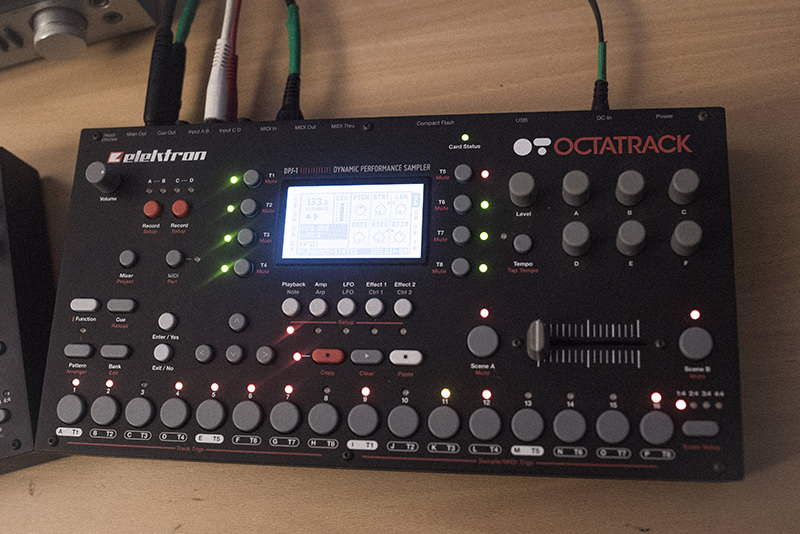
These days Elektron gear is more evenly spread across the genre, with many swearing by the Analog RYTM or Digitakt. But for a time there, you couldn’t make it through a night out without someone blowing your mind with an Octatrack.
Eurorack
Let’s acknowledge this right off the bat: Eurorack is an absurdly wide category. Yet more than any one specific module or even company, it’s the rise of Eurorack as an alternative to more commonplace devices like synthesizers and drum machines that has infused 21st-century techno with a radical, new life.
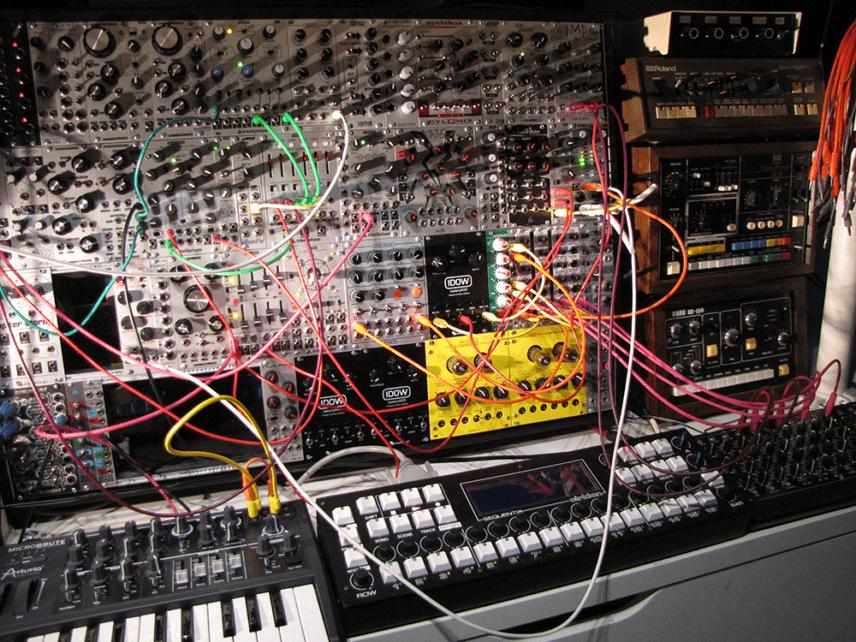
Created by Dieter Döpfer in 1995 with his Doepfer A-100 modular system, Eurorack has expanded to include countless modules from not only Doepfer but a multitude of manufacturers and developers. More than just popularity, though, Eurorack has always encouraged experimentation in both synthesis and song production, and it’s this ethos that has arguably invigorated modern techno with a new kind of vitality.
Modular techno is very much a thing and even if a producer doesn’t identify specifically as a ‘modular’ artist, they’ve likely incorporated – or at the very least dabbled in – modular, and had that experience influence their own productions.
Roland TB-303
How many pieces of gear have entire genres based around them? Along with the Roland TR-808 and TR-909 (above), the TB-303 Bass Line is one of the few electronic instruments without which an entire category of music wouldn’t exist.
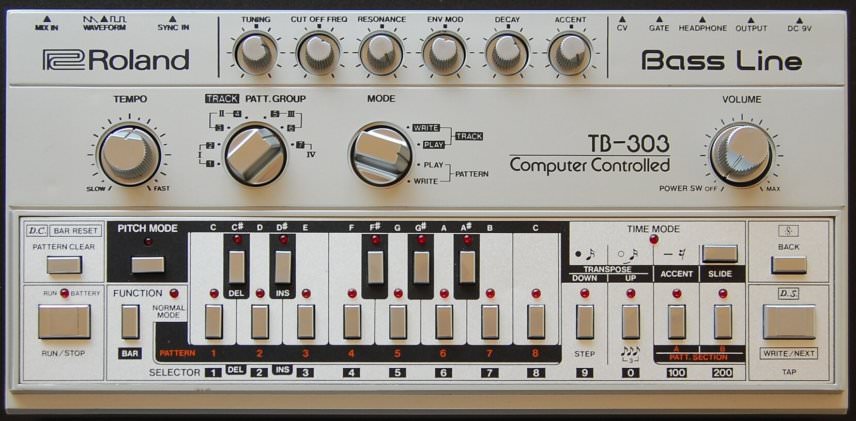
Released in 1981, commandeered by Chicago house producers in the mid-1980s and then pressed into techno service in the early ‘90s by folks like Richie Hawtin, Hardfloor and the mighty Underground Resistance, the 303 is so integral to techno at this point that it’s hard to imagine it without it. Sure, you can kind of make acid techno without a 303 (or one of its clones) but it just won’t be the same – and it will always feel like it’s coming up short.
D16 Group PunchBox
No other genre is as concerned with the kick drum as techno. As kick production techniques evolved over time to include layering, it was inevitable that bass drum-specific plugins would also appear. One that has really left a footprint on the genre is PunchBox from D16 Group.
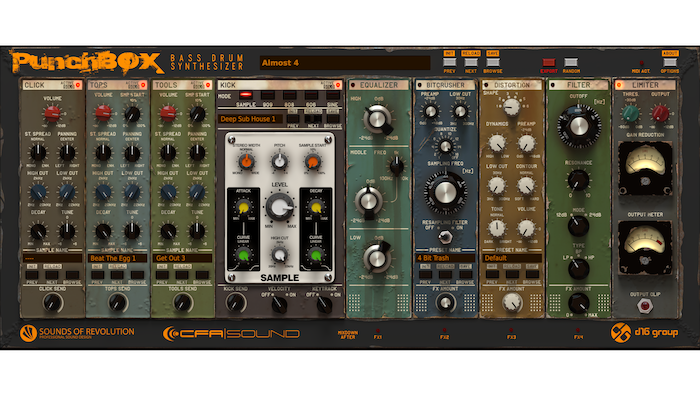
Combining both kick drum synthesis from its own 606, 808 and 909 plugins plus samples crafted by Sounds of Revolution and CFA-Sound, D16’s PunchBox lets you combine four layers of kicks – click, tops, midrange and body – and then run them through effects. It’s devastatingly effective and the kick drum instrument of choice for many, many producers.
U-he Diva
It’s hard to point at any one soft synth and say, this is the software that most influenced techno. However, Diva by U-he is one such plugin. With its ability to emulate a number of different classic synths such as the Roland Juno-106, it’s become a firm favorite among techno producers, especially melodic techno artists.
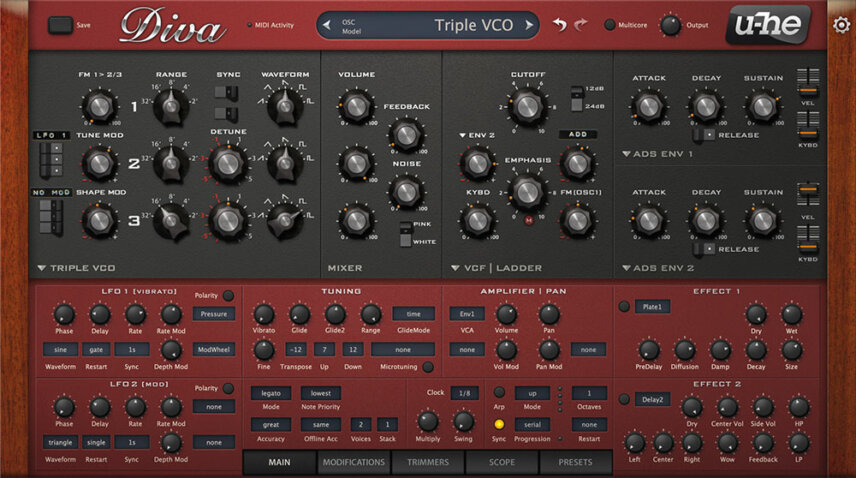
What really sets Diva apart, however, is the quality of the sound. It’s just so analogue-like. When comparing it side-by-side to a hardware synth you could probably tell the difference, but within the context of a busy mix, it very much holds its own.
If you liked this article, you may enjoy our new book, The Secrets of Techno Production, available now from the Attack Store.
